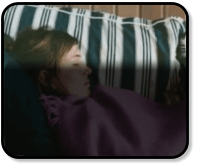MYTH #1: BED BUGS ARE ONLY FOUND IN BEDS
Despite their name, bed bugs are not limited to only beds. In fact, bed bugs have been known to hide up to 20 feet from one's bed, and can be found lurking most anywhere inside the room.
Places bed bugs often choose as secondary places to hide, include: chairs, couches, curtains, bureaus, picture frames, carpeting, molding, vents, ceiling fans/lights, smoke detectors, and even electrical outlets.
Truth is, at just the size of an apple seed, and possessing a flat, thin body, a bed bug can hide practically anywhere.












